Contents
Corporate P-Cards: How to Use Them for Maximum Advantage

Mohammed Ridwan
•
•
P-cards can replace your corporate credit cards.
If you rely on credit cards, you would have 2-3 cards issued to the executives, which are shared with the employees. Though it seems a great method to ensure approval and budget control, it has many loopholes.
The finance teams are running after employees for receipts, employees are waiting on OTPs and approvals, and the CFO is not satisfied with the numbers.
You look for alternatives and land on p-cards.
P-cards (or purchase cards) are corporate cards you issue to your employees for business expenses. Then, be it purchasing a SaaS or making vendor payments, employees use it for all work-related spending.
What are Corporate P cards?
Corporate P cards are company purchase cards that employees can use to make business purchases without going through the traditional purchase request and approval process. Corporate P cards make it easy for companies to manage account payables & automate expense accounting while staying in complete control of their spending.
What Is the Difference Between a Credit Card and a P-Card?
While both cards are used exclusively for business expenses, there are many differences.
Credit cards make expense management difficult, with no visibility into where the money is going. An executive shares a single card with their team, creating a chaotic financial situation.
The card owner struggles to manage a constant stream of payment requests. Employees are left hanging with delayed payments, waiting for approvals. Especially in bigger companies, finance teams struggle with reconciliation and zombie spending (which is when a company continues to pay for something that isn’t used anymore, or when it pays for services that former employees had used).
On the flip side, if you use p-cards, you can issue each employee a separate card for corporate expenses. Each card has a specific budget and restrictions to ensure control and facilitate approval without delays.
For instance, you issue a card with a $500 monthly limit, restricted to office supply vendors like "Office One."
In this way, you manage budget control and approvals without losing visibility or having to micromanage.
How can Businesses use Corporate P Cards for Employee Expenses?
Moving from a credit card to a P-card isn’t complicated. Here is a step-by-step process of how you can provide your employees p cards and start using them:
Step 1: Generate Corporate Cards
The first step is to choose the type of card you want for your employees: physical or virtual. While a virtual card can be set up in under a minute, a physical card takes about 2-3 days to get delivered.

Physical cards work well for those who travel or have on-site jobs, making petty cash management easy. Contrarily, virtual cards support secure online purchases, such as buying SaaS tools or paying for digital advertising campaigns.
Once you decide whom to give a card and what type, set the budget and policies. You can incorporate the following policies to customize the cards:
- Specify the budget and replenishment frequency of the budget on the card- daily, monthly, or yearly.
- Define the purpose of cards by enabling only specific general ledgers (GL), labels, and tax codes.
- Switch on/off the ATM withdrawal option.
- Enable auto-lock for cards in case of receipt policy violation, where if the receipt isn’t attached in 7 days, the card is frozen.

All these customization options offer you better control without having to chase employees later. Deciding the budget, frequency, and vendors ensures that the card is used rightfully.
For instance, you would switch off ATM withdrawal for virtual cards that are meant for buying SaaS tools. Likewise, you can establish a monthly replenishment schedule to maintain sufficient funds while preventing excess spending.
Apart from this method, your employees can also request to activate the P-cards. They explain the card's purpose, after which the admin can approve/reject the request.

Now that the employees have cards in their hands, let’s see how you can better manage corporate spending with them.
Step 2: Manage Expenses Via Centralized Dashboard
Every expense on the corporate p-card is visible in real time on a centralized transactions dashboard. You get key information such as merchant name, expense category, card information, amount, and approval status.

Along with this dashboard, you get a dedicated tab for each expense where all its information is available.
You can review the key information such as receipt, department, merchant, date/time, expense category, etc. you can also download the receipt, approve/reject the expense, and check the activity log.

The activity log keeps track of all the conversations that have been happening with a particular transaction. Traditionally, companies use email and Slack, which makes communication messy. With this log, they can keep all their conversations and important information in one organized place.
Step 3: Create Approval Workflows
Approval workflows ensure that each expense follows a defined hierarchy for approval by the right stakeholders. You can customize them depending on different amounts, departments, and other factors.
It is a simple no-code system where you create workflows based on if-then rules.

A custom approval workflow ensures timely and effective approval without having to run after dedicated team members. Each of them receives a notification as soon as the expense takes place, and they can approve it easily.
Approvals and employee reimbursement become easy with a frictionless workflow like this.
Step 4: Report and Reconcile Expenses
Integrating your cards with your accounting systems becomes the last step to facilitate reporting and reconciliation.
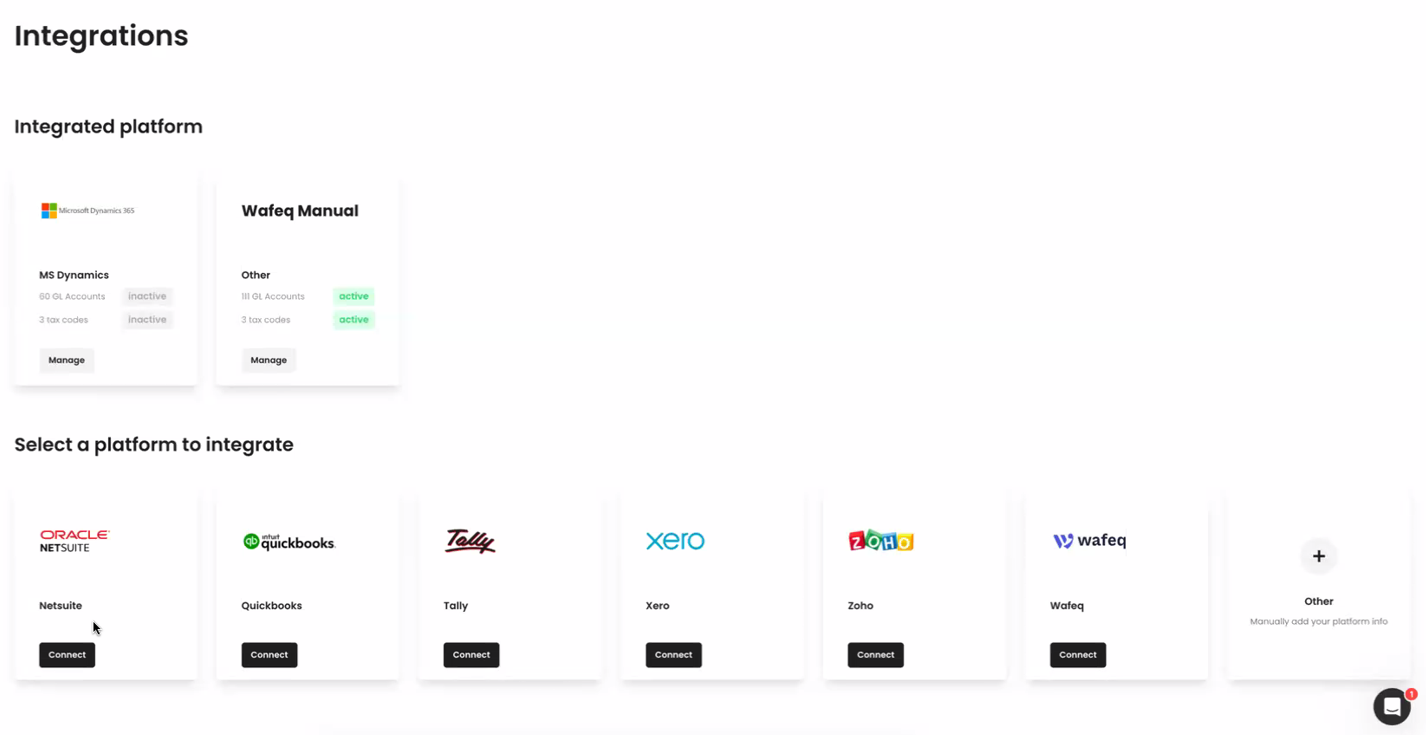
Once you integrate with your accounting software, you can enjoy complete visibility and control over your corporate expenses.
You get a dedicated insights window to track expenses and identify trends. You can add custom filters and export these for further analysis.

To understand the entire process better, book a demo and see how you can benefit from switching to a corporate p card.
Why Shift From Traditional Methods to Corporate P Cards?
Credit cards seem simpler, where a bank gives a few credit cards to share among the teams. But here’s why it doesn’t work:
- It is difficult to track who spends what, how much, and why.
- Employees wait for OTPs and approvals, delaying payments and reimbursements.
- The chances of zombie spending increase because the same card is shared. This also becomes one of the loopholes which leads employees to misuse the cards.
- The admins have to chase employees for receipts during reconciliation.
While these are just a few, relying on credit cards can cause chaos in expense management. Here are some reasons corporate p-cards are a more suitable option today:
No More Shared Cards

You ditch the whole system of sharing credit cards, which is the root cause of limited visibility. With corporate p cards, you can issue any employee a dedicated card for specific expenses.
So, if you issue Rashid from the marketing department a virtual corporate card for running Ads, he can not use it otherwise. He will be accountable for any unnecessary expenses beyond the specified budget.
This means more visibility and control over corporate expenses.
Easy Receipt Management

Corporate cards make receipt management easier with OCR technology in the following ways:
- Submitting expense reports at the end of the day becomes easier as it auto-populates all the information
- Uploading receipts in bulk upload with OCR handling the rest makes the process faster
- Detecting duplicate receipts becomes simpler as OCR eliminates the risk of manual errors
Apart from OCR, you also get the option to split the transactions to make the accounting process easier. Here, for each transaction, you can split the amount into a separate category, GL account, tax code, etc.

For instance, a $300 expense can be split into $200 for software purchases and the remaining $100 as consulting fees. Each will have a specific category, GL account, and corresponding tax code.
Budget Control
Corporate cards give more visibility and control over finances.
Although both credit cards and p-cards can have specific budgets, p-cards enable you to set specific policies and rules.
For instance, you give an employee a $1,000 monthly budget but restrict them to using the card only for office supplies purchases.
Similarly, you can set a $500 monthly limit for marketing expenses and restrict the card to "Ad Campaigns" and "Promotions," ensuring focused spending.
Another benefit is to assign monthly, yearly, and weekly budgets.
For instance, you can allocate an annual budget of $500,000 for the marketing department but assign a weekly budget of $10,000 for ad campaigns.
This facilitates flexibility for the teams to function better and gives the finance team more control over resource planning and allocation.
WhatsApp Integration

Receipt uploading becomes simpler when all you have to do is click a picture on WhatsApp and hit send.
After each transaction, employees get a notification to upload the receipts via WhatsApp. With this simple integration, receipt capturing becomes simple and fast.
Not only is the receipt captured, but stored under the relevant transaction tab with all its information intact. OCR makes it easier to extract key details and populate expense reports.
Admins can approve these expenses, and reconciliation becomes a breeze.
Eliminate Corporate Card Fraud
P-cards give you more control and security. From setting custom policies to raising alerts in case of duplicate receipts, p-cards ensure that employees don’t misuse the cards.
Additionally, the custom approvals workflows and dedicated activity logs reduce the chances of oversight. This system helps prevent unauthorized spending.
For instance, an employee tries to use the card for a personal expense, like an expensive dinner.
The custom approval setup will alert the admins. The active activity log with documented conversations will further ensure that no personal expense is charged on corporate cards.
Get the Most Out of Your Corporate Cards
Transitioning from credit cards to corporate p cards can be an exciting move. But to make the most of it:
- Set an expense policy outlining the guidelines that will govern the corporate cards. This practice will also become the pillar for a healthier financial environment to support internal control over financial reporting (ICFR) efforts.
- Understand the hierarchies in the company to create approval workflows accordingly. Find a balance between control and micromanagement. Managers should be informed about expenses without being excessively involved in them.
Do this right, and you will have better visibility and control over your finances. The employees will not be left hanging for approvals. The finance team will be at peace, and the CFO will have more faith in the numbers.
Find out how much your business can save with Pluto
Discover your savings with Pluto's Cost Saving Calculator and take control of your expenses. Unlock cost-efficiency now!
Calculate NowLearn how Pluto is helping Keyper to eliminate petty cash spending and optimize spend management
Read More

Mohammed Ridwan, COO of Pluto
At Pluto Card, our mission is to assist businesses of all scales make well-informed choices. To uphold our standards, we follow editorial guidelines to guarantee that our content consistently aligns with our high-quality benchmarks.
Get started with a free account
Let Pluto do all the heavy lifting, so your finance team and employees can focus on things that actually matter and add to your bottom line. Get started with a free account today.
You may also be interested
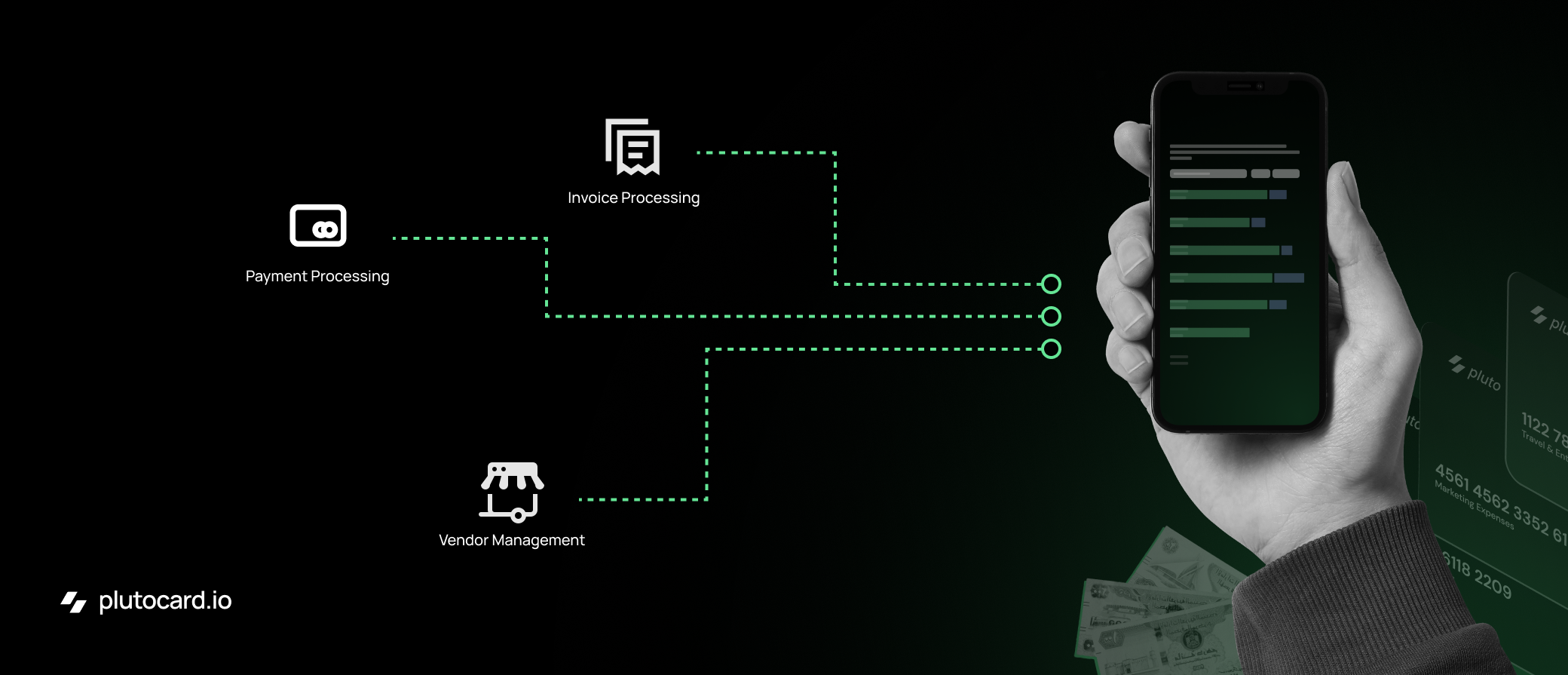
•
Mohammed Ridwan
How to Improve the Accounts Payable Management Process for Healthy Working Capital
Accounts payable (AP) is the money you owe vendors and creditors, i.e., short-term liabilities. These are the payments for goods and services you received that are yet to be cleared.
Companies struggle to manage accounts payable because the process involves multiple stakeholders, and the workflow isn't clearly laid out. The teams have to handle hundreds of documents, including purchase requests, purchase orders, goods received notes (GRN), invoices, etc. and ensure there isn't any discrepancy with the order received.
So, decentralized approvals and verifications make the process chaotic before the team can clear the final payment. If you find yourself in a similar situation, where accounts payable is hectic, and the working capital is messed up, read this post to discover the top strategies for effective accounts payable management.
{{less-time-managing="/components"}}
What is the Account Payable Process?
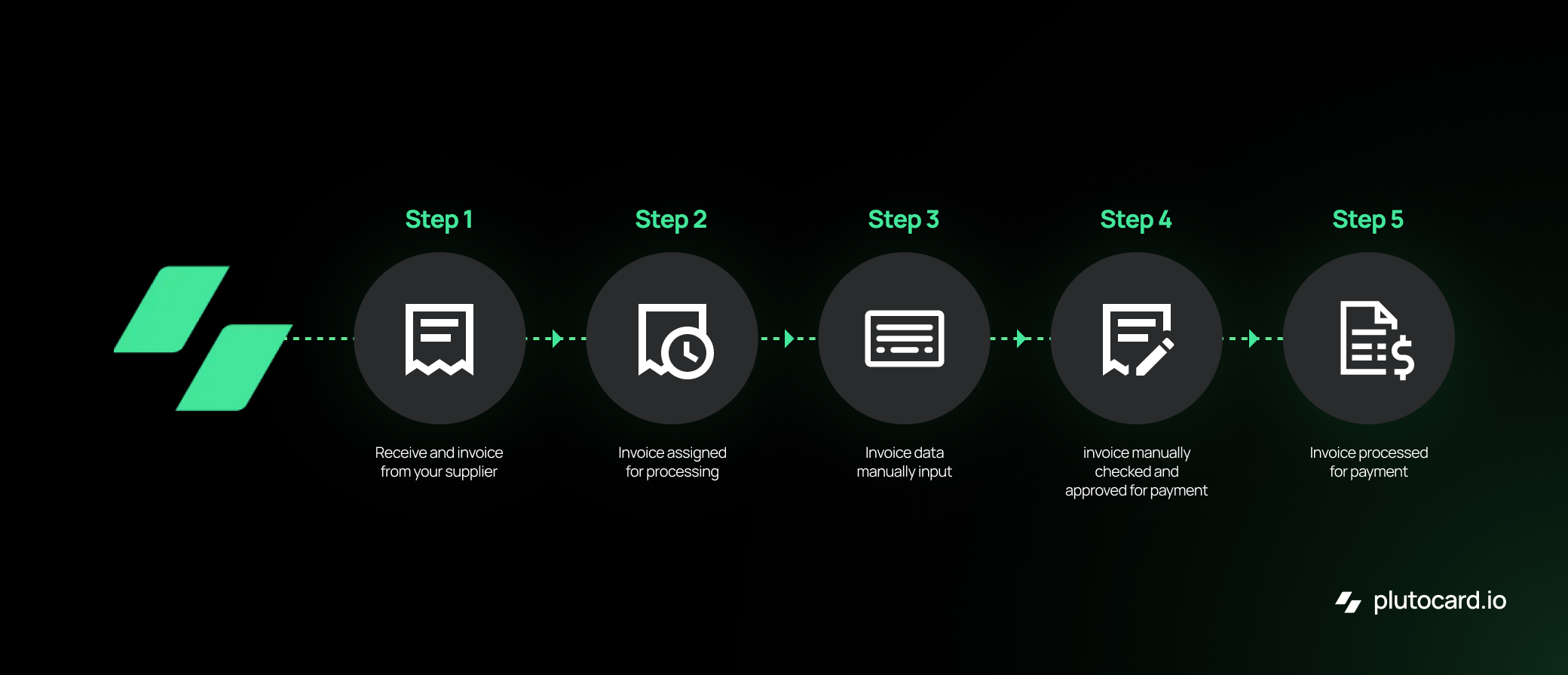
The AP process starts upon receiving goods and an accompanying invoice for payment processing. The next step involves verifying the accuracy of the invoice details. This verification process ensures that the goods received match the information provided in the invoice, including quantities, prices, and other relevant terms.
Following the confirmation, the invoice undergoes an approval workflow. It involves obtaining the necessary authorizations from various departments or individuals within the organization and ensuring compliance with internal policies and procedures before proceeding with the payment.
After completing the payment, the accounts payable team records the transaction in the financial system, updating the company's records. This step ensures accurate financial reporting and maintains an up-to-date overview of the company's financial position.
Challenges of the Decentralized Accounts Payable Process
Companies strive to maintain a seamless flow of goods and services while meeting financial responsibilities through timely and accurate AP management. However, relying on a manual process for these tasks introduces these bottlenecks:
- Managing documents manually raises concerns, particularly with paper-based documents that are susceptible to misplacement or damage. It not only hampers day-to-day operational efficiency but also poses a threat to data integrity.
- Similarly, a manual verification process increases susceptibility to mistakes. Achieving precise alignment between received goods and invoice information requires meticulous attention, heightening the possibility of overlooking crucial details such as terms and conditions.
- The manual handling in the approval workflow introduces risks of delays and potential oversights. Obtaining authorizations from different departments becomes time-consuming, and ensuring compliance with internal policies is prone to human errors.
- After completing the payment, the critical step of recording the transaction in the financial system becomes vulnerable to manual data entry errors, impacting the precision of financial reporting and the clarity of the company's financial standing.
- The manual process increases the likelihood of inadvertently paying the same invoice multiple times. Inaccurate data entry and a lack of robust authentication processes expose the organization to fraud, including the manipulation of invoices.
In summary, the manual accounts payable process detrimentally affects operational efficiency and financial stability. The lack of synchronization across different teams results in communication gaps and discrepancies. Failing to maintain a cohesive and streamlined process leads to errors in financial reporting, impedes effective decision-making, and strains interdepartmental collaboration.
Strategies for Efficient Accounts Payable Management
Effective management of the accounts payable process is possible when you optimize the human and technological aspects of the same.
On the human side, optimizing requires streamlining workflows, enhancing communication, and fostering a collaborative environment. Simultaneously, the technological part involves shifting to an accounts payable automation solution that provides a centralized platform for complete visibility and control.
Here are the strategies for efficient accounts payable management:
Strengthen Internal Control Over Financial Reporting
Internal control over financial reporting (ICFR) ensures the accuracy, reliability, and integrity of financial information within an organization. ICFR helps safeguard financial processes and mitigate risks as the intricate nature of accounts payable necessitates a robust control framework.
Strengthening ICFR for enhancing accounts payable management involves the following elements:
1. Segregation of Duties
With the segregation of duties, you ensure that no single individual controls all the stages of the accounts payable process. You divide the responsibilities among different staff members, which reduces the risk of errors, fraud, and mismanagement.
For instance, by assigning one team member to handle invoice approval and another to process payments, the segregation of duties minimizes the risk of errors or fraudulent activities and promotes accountability.
2. Audit Trail
Establishing a comprehensive audit trail involves recording and documenting every transaction in a chronological sequence of activities. It facilitates transparency and serves as a valuable tool for tracking and investigating discrepancies that arise during the accounts payable process.
For instance, in the case of an invoice mismatch, a comprehensive audit trail makes it easy to trace the exact steps in the transaction history, revealing where the error occurred. It speeds up the resolution process and enhances accuracy in financial reporting by promptly addressing issues.
3. Approval Policies
Clearly defined approval policies outline the hierarchy of authorizations required for various transaction amounts, ensuring that financial transactions undergo proper scrutiny before processing.
For instance, a clearly defined approval policy mandates that transactions under $1,000 require approval from a department head, while amounts exceeding $10,000 necessitate approval from top-level management.
4. Document Policies and Procedures
Clear documentation outlines specific steps for the accounts payable process. When a team member adheres to these guidelines, all required approvals are obtained, documentation is consistently retained, and errors are minimized.
In practical terms, this means that during an audit, the organization quickly and accurately traces the entire lifecycle of an invoice, showcasing compliance, reducing audit time, and enhancing financial transparency.
By strengthening ICFR, organizations systematically address challenges such as fraud, errors, and inefficiencies.
Employing Technology
AP automation optimizes the accounts payable management process beyond mere operational enhancements, enabling accuracy, efficiency, and informed decision-making. Automating AP management is a strategic approach with the following key elements:
1. Centralized Collaboration
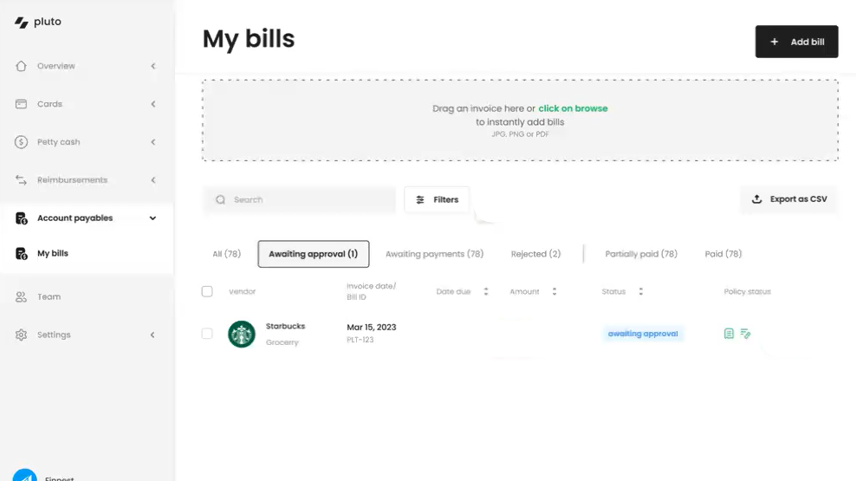
Automation involves centralizing AP management and creating a unified document storage and collaboration platform. Not only does it extract all the critical information, but it also stores them on a centralized dashboard for easy access and processing. This fosters seamless communication among team members, ensuring everyone can access real-time information and collaborate effectively.
2. Safeguards for Duplicate Payments
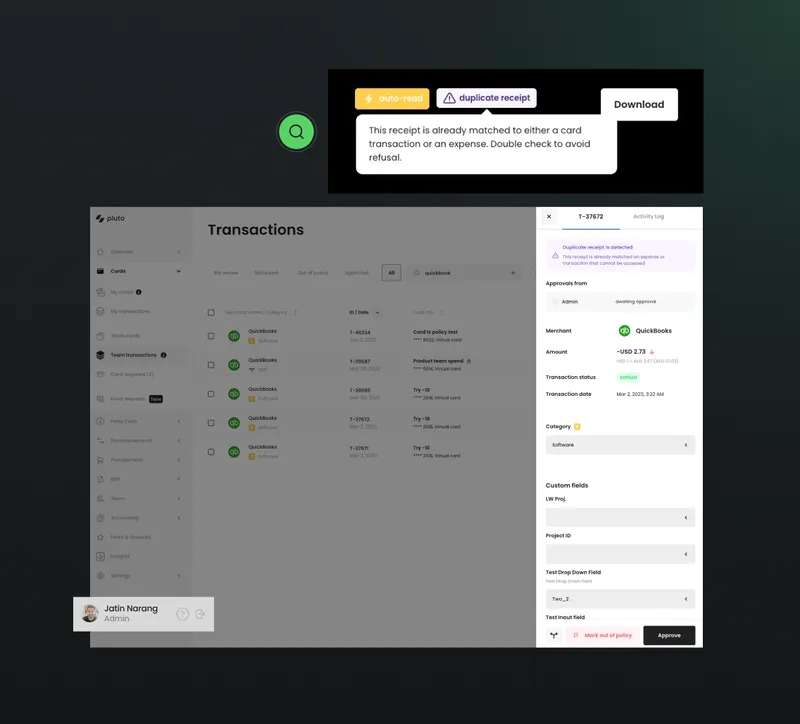
Automation includes built-in safeguards to prevent duplicate payments. Automated systems employ checks and validation processes to flag duplicate receipts and eliminate the risk of paying the same invoice multiple times, reducing the likelihood of financial errors. Moreover, since the centralized platform acts as a single source truth, the possibility of double payments automatically reduces.
3. Streamline Workflow
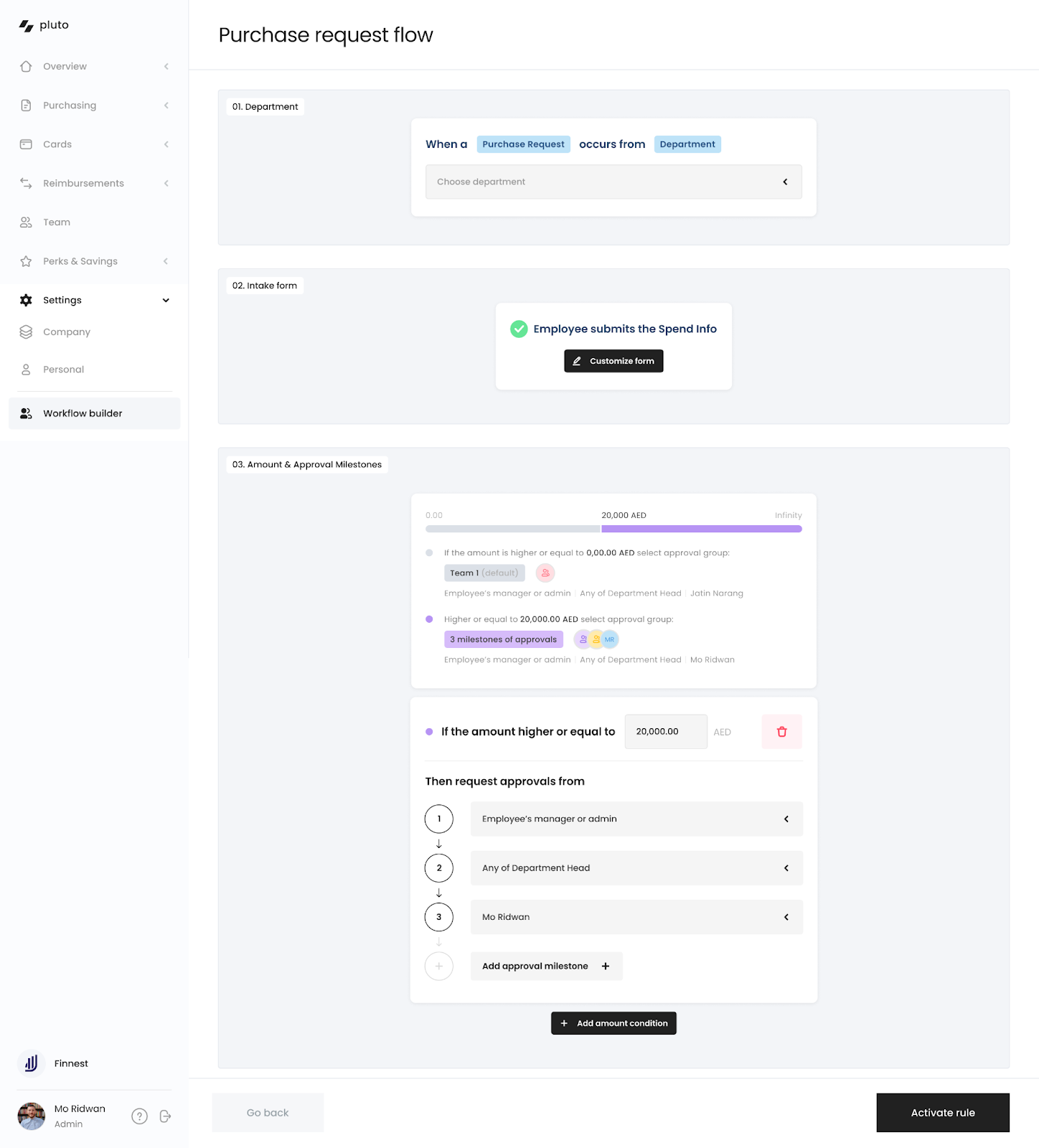
Automated workflows simplify and streamline the entire AP process. With simple if-then rules, you can create workflows for trigger-based approvals. By eliminating manual intervention at various stages, tasks such as invoice approval, payment processing, and data entry become more efficient, reducing processing times and enhancing overall workflow.
4. Integrate
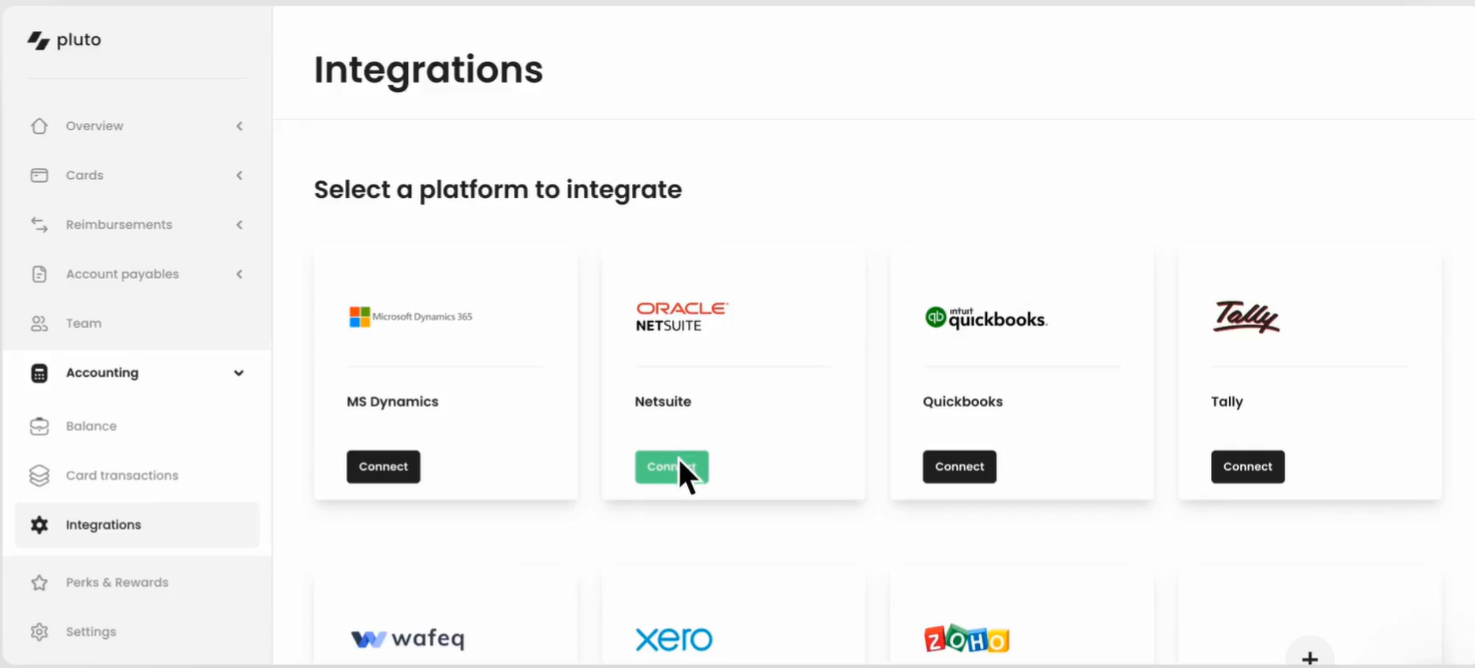
The accounts payable software integrates with other financial systems. This integration ensures a cohesive flow of information across departments, reducing data silos and enhancing accuracy in financial reporting.
5. Insights
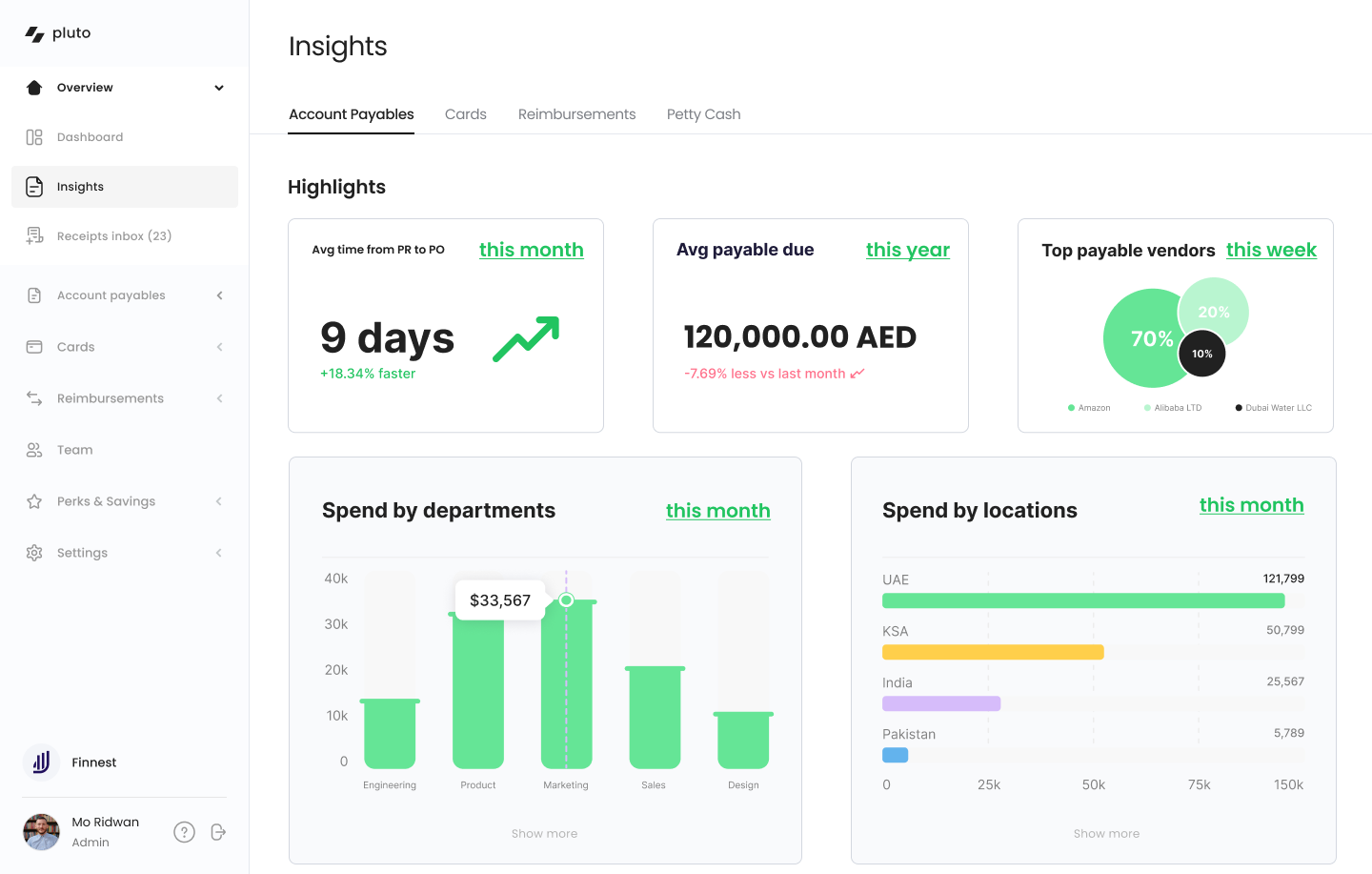
Automated AP systems provide valuable insights through analytics and reporting tools. These insights enable businesses to track key performance indicators, identify trends, and make data-driven decisions. This analytical capability contributes to strategic financial management and planning.
Improve Vendor Relationships
Vendor relationships are not just about successful transactions. Healthy partnerships bring many benefits, such as streamlined processes, minimized disruptions, and a collaborative atmosphere that enhances the overall effectiveness of the accounts payable function within the organization.
Improving accounts payable management involves the following components:
1. Negotiate With Vendors
Initiating negotiations with vendors involves engaging in open discussions about terms, pricing, and contractual agreements till both parties arrive at mutually beneficial arrangements. Compelling negotiation ensures favorable terms for the company and establishes a foundation of trust and collaboration.
For instance, when negotiating with a key supplier for raw materials, the company secures favorable terms such as bulk purchase discounts and extended payment periods. This not only reduces costs but also builds a positive, long-term relationship.
2. Timely Payments
Adhering to agreed-upon payment schedules fosters goodwill and reliability, positioning the company as a trusted and preferred partner. Timely payments strengthen vendor relationships and contribute to smoother transactions and potential benefits such as early payment discounts.
3. Transparent Communication
Keeping vendors informed about payment timelines, potential delays, or any changes in the process contributes to a positive working dynamic. Open lines of communication facilitate problem-solving, creating an environment where both parties feel comfortable addressing concerns and finding resolutions.
4. Streamline Onboarding Process
Simplifying the onboarding procedure by providing clear guidelines, efficient documentation processes, and transparent communication ensures that vendors can seamlessly integrate into the accounts payable system. It saves time and lays the groundwork for a cooperative and efficient long-term partnership.
By implementing these strategies, businesses cultivate vendor relationships that go beyond transactional interactions, fostering a collaborative environment.
End Result: Optimized Accounts Payable Management Process
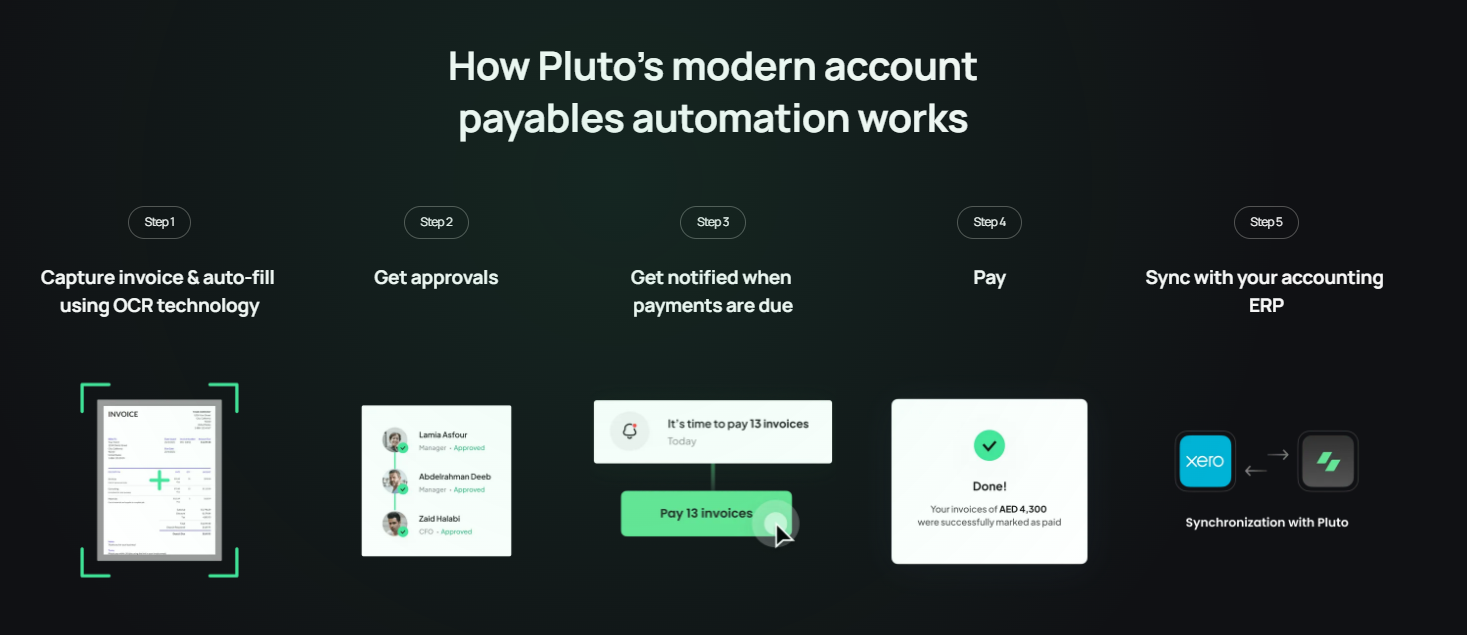
For storing and retrieving documents, you get optical character recognition (OCR) technology that extracts invoice information accurately. All the information goes on a centralized digital platform, reducing the chance of misplacement and improving accessibility.
For verification, you get all the necessary information on a unified dashboard. This centralized database enables accurate cross-referencing of received goods with invoice details, minimizing errors and making the process more efficient.
You get a no-code trigger-based approval workflow builder for approvals, where you can create workflows with simple if-then rules. These preset rules and automated notifications make authorization seamless across departments, reducing delays, ensuring policy compliance, and lowering the risk of human errors.
For recording transactions, you get integration facilities, where your accounts payable software syncs data across your accounting systems for consistent records, minimizes errors, ensures precise financial reporting, and offers a real-time, accurate view of the company's finances.
Next Steps for Efficient Accounts Payable Management
After establishing transparent processes and policies and adopting the right automation tools, plan an AP audit.
An AP audit involves reviewing and assessing the existing procedures to pinpoint areas that can be improved. By doing so, you identify inefficiencies or bottlenecks in the accounts payable management system. It provides insights into how well the established processes align with the intended goals and whether adjustments are needed.
This proactive approach helps enhance the overall efficiency and effectiveness of accounts payable management, ensuring that the system operates smoothly and aligns with the company's objectives.
Read more about AP audits in our post to understand how they help and how you can prepare for them in advance.

•
Mohammed Ridwan
How Corporate Fleet Cards Help Modern Transport & Logistic Businesses
Companies use petty cash for managing driver and transport expenses, including maintenance, repairs, and small purchases, by allocating a small amount of physical cash to drivers. Drivers submit receipts for reconciliation, and they manually track these small transactions.
However, tracking numerous trivial transactions becomes time-consuming, and discrepancies emerge during reconciliation. There's always a risk of misuse or theft, demanding strict security measures. Moreover, negotiating favorable terms with vendors for minor, recurring transactions becomes challenging. They must carefully budget and maintain a sufficient petty cash fund, which strains their overall cash flow.
Overall, the manual process raises efficiency concerns, necessitating a balance between control and practicality in managing day-to-day vehicle-related expenses.
A better alternative to petty cash is a fleet card.
This post will explore corporate fleet cards, their benefits for transport and logistics, and strategies to overcome potential fuel card challenges for improved spend management.
What Is Meant by Fleet Card?
A fleet card, also known as a fuel or gas card, is a specialized payment card used by businesses to cover expenses related to their vehicle fleets. It is issued by fuel companies or financial institutions specifically for fuel purchases, maintenance, and other vehicle-related expenses.
What Can Fleet Cards Be Used For?
The fleet cards are primarily used for fuel purchases, maintenance, and repairs. They facilitate seamless payments for routine servicing, tolls and parking fees, and purchasing vehicle-related products.
You get cards with custom spending limits and advanced controls, such as real-time transaction monitoring mechanisms, category-specific restrictions, and automated alerts for enhanced security and streamlined expense management.
Drivers purchase fuel, maintenance, and other vehicle-related expenses at authorized locations with the cards, and you enjoy complete visibility on a centralized dashboard for each transaction.
What Are the Benefits of a Corporate Fleet Card?
Switching from manual petty cash management to a fleet card yields the following benefits:
- Simplifies payment processes by reducing the complexity of cash handling
- Improves tracking and monitoring of all vehicle-related expenses
- Minimizes the risk of theft or misuse, providing enhanced security measures
- Automates the expense management and reconciliation process, eliminating manual record-keeping and ensuring accuracy with reduced likelihood of errors
- Promotes compliance by enabling you to set controls and restrictions on card usage according to company policies
- Enhances budgeting by providing detailed reports and insights into the spending patterns for a structured and controlled approach to managing vehicle-related costs
- Streamlines transactions with vendors, offering an efficient payment method for small, frequent transactions
Should I Use a Fuel Card or a Credit Card?
Fuel cards and credit cards share similarities in providing a convenient payment method for expenses. Both can be used at gas stations and offer detailed transaction records for monitoring expenditures. Moreover, both cards come with features such as spending controls, reporting tools, and rewards programs.
However, here are some differences between the two:
- Fuel cards restrict card usage to fuel and maintenance-related purchases, providing greater control and limiting potential misuse.
- Fuel cards come with fuel discounts or rewards programs at specific gas stations, providing potential cost savings that credit cards do not generally offer.
- While credit cards provide transaction records, fuel cards offer more detailed reporting on vehicle-related expenses like fuel consumption, maintenance costs, and odometer tracking.
- Fleet cards partner with fuel providers, service centers, and other vendors, allowing businesses to negotiate favorable terms and discounts for bulk purchases or regular transactions. For instance, a fleet card's partnership with a fuel station yields discounted fuel prices, facilitating substantial cost savings.
So, for transport and logistics businesses, corporate fleet cards offer specialized controls for fuel and maintenance, streamlined reporting, and potential fuel-related discounts.
What Are the Risks of Fuel Cards?
Fuel cards, tailored for fleet management, are designed to address the unique needs of companies in the transport and logistics sector. However, organizations face the following challenges when switching to corporate fleet fuel cards:
1. Gas Station Availability Issues
Fuel cards encounter challenges related to gas station availability that limit refueling options. As a result, drivers can not find suitable gas stations, leading to increased travel time and delays in delivery schedules.
3. Location-Dependent Acceptance
The acceptance of corporate fleet cards varies by location, leading to constraints and inconveniences for companies operating in areas where certain cards are not widely accepted.
Drivers will encounter difficulties during interstate routes if you offer a nationwide delivery service and the fleet card is only accepted at specific gas stations or regions. It complicates expense management and hinders the company's ability to streamline fuel-related transactions.
3. Management Complexity
The specialized design of fuel cards introduces an administrative burden when managed separately. For instance, a company using distinct fuel cards for different vehicles finds consolidating expenses difficult, leading to increased administrative efforts and potential operational inefficiencies.
As a result, administrators have a hard time reconciling statements, accurately tracking expenses, and ensuring compliance. This burden increases processing times and errors in financial reporting.
4. Reward Limitations
While crafted to suit industry needs, fuel cards encounter limitations in cashback offers. Consider a scenario where a company's preferred fuel card provides cashback benefits only at select stations, restricting potential cost savings for the entire fleet.

Why Should You Switch to Pluto Corporate Fleet Cards?
Pluto fleet cards don't restrict the use of cards at their discretion. Instead, they facilitate advanced controls and real-time visibility. From issuing budgeted fuel cards to creating vendor-specific cards, you can set rules that align with your company's needs and policies. Then, with each transaction, you track all fleet expenses from a single dashboard and get real-time data without manual effort.
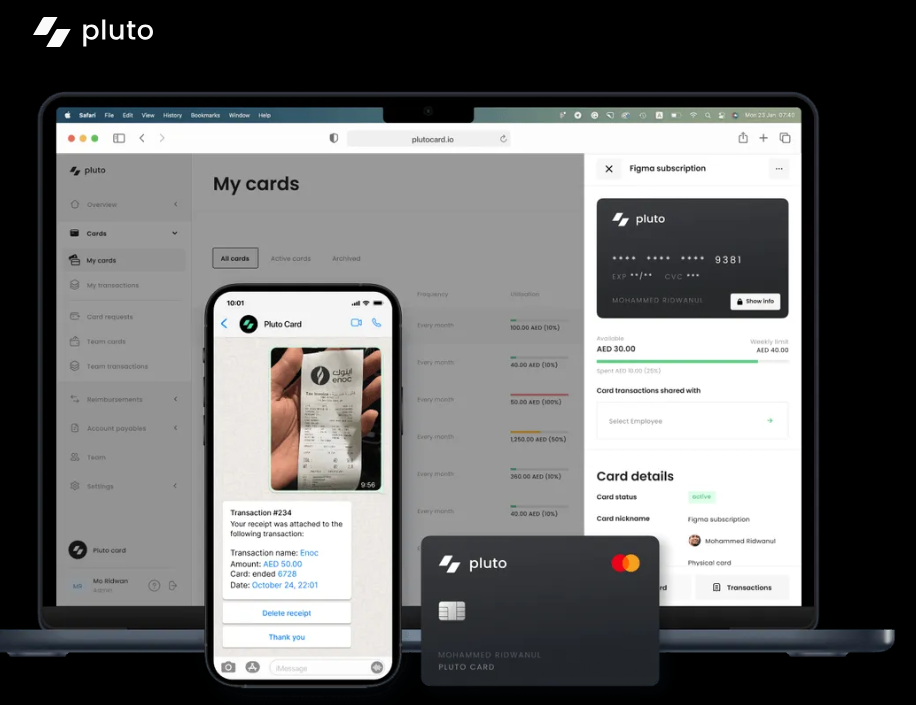
So, you set cards and add controls, and you are good to go! Drivers can spend them at convenient gas stations while you enjoy complete visibility and control. Each transaction appears on the dashboard and notifies drivers to upload the receipt directly from WhatsApp. Once uploaded, you can approve the expense, and the data syncs with your accounting software to help you close your books ten times faster.
Here are the top six benefits of switching to Pluto corporate fleet cards:
1. Unrestricted Access Anywhere
Unlike traditional restrictions, Pluto corporate fleet cards liberate your drivers. There are no limitations on locations or specific fuel stations. Enjoy the convenience of using cards at the most budget-friendly and strategically located gas stations, repair shops, or truck stops that welcome Mastercard.
2. Easy Cashback
Pluto corporate fleet cards make cashback benefits straightforward. With up to 2% unlimited cashback on over 100+ currency spends, enjoy seamless cost savings without intricate conditions or restrictions.
3. Smart Budgeting
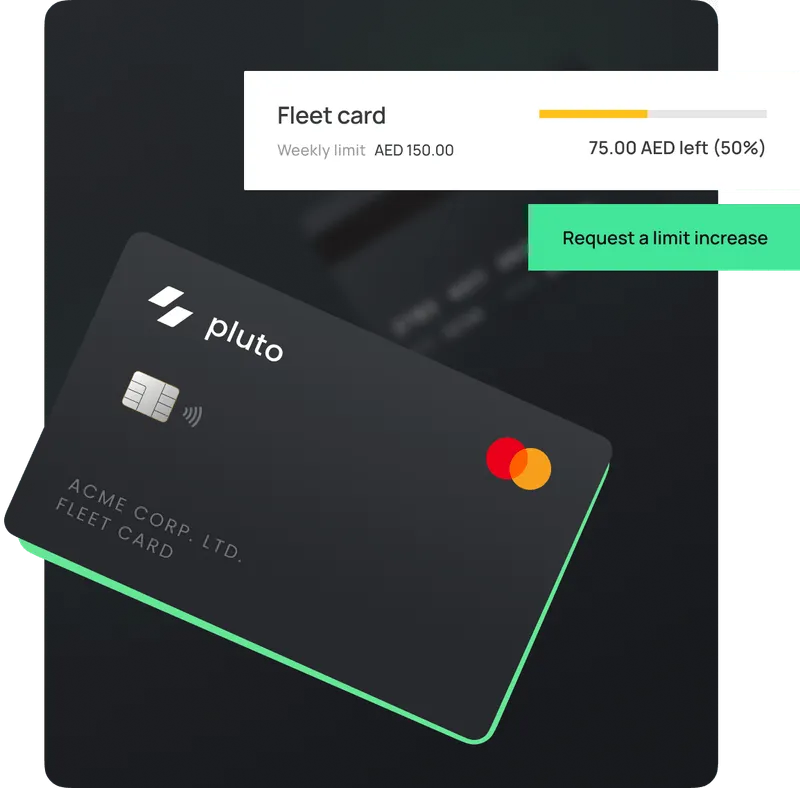
Pluto fleet cards, functioning as debit cards, provide smart budgeting without blocking cash flow. Drivers can request limit increases in seconds, ensuring operational flexibility with swift approvals. This distinctive feature sets Pluto apart, seamlessly blending budget management and uninterrupted cash flow for efficient fleet operations.
4. Driver-Friendly Controls
Provide drivers with budgeted fuel cards and set spending rules. Real-time data and advanced controls give you complete transparency of fleet expenses, enabling strategic decision-making.
5. Grow With Ease
Whether you have hundreds or thousands of drivers, the streamlined process of issuing corporate fleet cards and setting controls remains hassle-free, supporting your scalability with ease.
6. Eliminate Fraud

Lock or freeze cards instantly from the Pluto app, ensuring proactive measures against fraud. Enable company policies to ensure in-policy transactions, eliminating the risk of unauthorized spending.
Enhance End-to-End Spend Management
Pluto eliminates the need for separate investments in corporate fleet cards, offering an all-in-one spend management solution.
Pluto's comprehensive platform facilitates both corporate purchase cards and fleet cards, streamlining your financial operations. Enjoy the same benefits as traditional corporate fleet cards but with enhanced functionality, all within a unified platform. With Pluto, you get unparalleled efficiency in managing corporate expenses, ensuring a seamless and integrated approach to financial control.
Transform your spend management today. Book a demo and discover how Pluto can optimize your financial processes and elevate your business operations.
.jpg)
•
Vlad Falin
What is Spend Management? Importance, Benefits & Process
In the realm of business operations, effective spend management is crucial for maintaining a healthy financial bottom line. Businesses grappling with inefficient spending control face risks that can substantially impact their financial stability.
For example, poor invoicing practices that cause a delay in payment can lead to contract management issues or, even worse, a lost client for your business. It also might cause issues with some of your preferred suppliers if they feel they’re not being paid on time.
Making a slip-up that disrupts a subscription can mean your company lacks access to critical software or tools until the issue is fixed.
A poor expense report system means charges incurred on your business trip might result in many follow-up questions, so your accounts payable team is on the same page with purchase orders. A system without real-time visibility for spending data is not ideal for any organization and does not make it easy to reduce spend.
Intelligent spend management helps prevent these issues. A business uses spend management to comprehensively track and review organizational-wide spending and purchase orders down to the last dirham.
In this post we will deep dive into spend management and discuss the best ways to properly manage it.
What is spend management?
Spend management refers to the systematic process of tracking, analyzing, and controlling an organization's total expenditure. It encompasses all aspects of business spending, including invoicing, contract management, subscription services, and expense reporting.
The goal of spend management is to enhance financial stability by providing real-time visibility into all financial transactions and purchase orders. This comprehensive approach enables businesses to identify inefficiencies, reduce unnecessary expenses, and maintain strong relationships with suppliers and clients.
The Importance Of Spend Management
Effective spend management is crucial for a company's financial health and operational efficiency. Neglecting careful expenditure tracking or allowing excessive indirect spending can lead to significant revenue loss, risking even the most well-planned business strategies. Managing costs and enhancing efficiency becomes challenging when financial processes are time-intensive and complex.
A report by McKinsey highlights the critical nature of this issue, noting that external spending on suppliers typically represents 40-80% of a company's total expenses. This statistic underscores the vital importance of meticulous spending control. Furthermore, the process of reviewing and optimizing expenditures can have a substantial impact on employee workloads, indicating the far-reaching effects of spend management.
Adopting robust spend management practices enables companies to achieve greater financial stability and avert potential crises. Implementing a system that tracks and monitors all financial transactions ensures that expenditures are fully accounted for, reducing the likelihood of wastage. In summary, efficient spend management is not just about cost control; it is a strategic approach that influences every aspect of a company's operations and contributes significantly to its long-term success.
{{cta-component}}
Advantages Of Digital Spend Management
In this day and age, using an online tool to keep track of your expenses should be a no-brainer. Let’s have a look at some of the main advantages.
1. Insight Into Everyday Expenditures
Where is every dirham your company makes going? If you don’t know, digital spend management will dramatically strengthen financial accountability, budgeting, and expenses. In addition, reporting on where company funds are flowing makes it much simpler to see how different department heads oversee budgets. Read more on how to improve internal control over financial reporting.
2. Stronger Financial Controls
Spend management tools like Pluto, allow you to not only monitor your spending in real-time but also set the limits on the go. In addition to that you can issue cards for departments or individuals, and even focus them on a particular type of usage, such as specific vendors only.

3. Budget optimization
Effective spend management is a great solution to ensure a better-looking budget. Analyzing and managing spending makes it simple to find and cancel unneeded services, negotiate lower prices with new supplier contracts, and never have to pay a late fee again. It will also significantly help your board of directors as they’ll have a simplified, streamlined budget to review and discuss at the start of the year.
Common Spend Management Challenges
It’s easy to pursue spend management practices that hurt your business’s bottom line if you’re not careful. Many ‘traditional’ best practices might not fit companies with remote-first work policies, engage in cutting-edge industries, or have an unorthodox structure.
If your company has a dynamic structure, spend management becomes all the more important to help you keep up with the competition and get the most value out of every dirham spent.
Keep these potential challenges in mind as you pursue spend management practices.
1. Relying On Old Spending Data
Be wary of relying on old budgets or financial data when managing more spend. It’s challenging for leadership to identify problem areas with cash inflows or outflows, when they only have outdated information.
2. Over reliance On Manual Mapping
Having to go back at the end of the month to match spending to budgets manually can take an inordinate amount of hours and opens the door to errors and mistakes that can throw off a spend management policy.
Pluto helps to automatically match spend to budgets in real-time, ensuring accounting and finance teams have accurate updates.
3. Harnessing Too Much Technology
Modern financial software can dramatically help your company’s day-to-day operational flow. However, if these solutions do not work together, chaos can ensue which leads to data migration and processing errors. Pluto integrates with your accounting tools, cutting the data flow time significantly.
4. Outdated Processes
The post-COVID world of remote and digital work means your employees might be scattered across the globe and in different time zones. Having to arrange shared corporate cards manually or coordinate team spending with employees in different locations can be tricky. Pluto offers unlimited virtual cards, which allow you to provide a payment channel for any employee anywhere in the world.
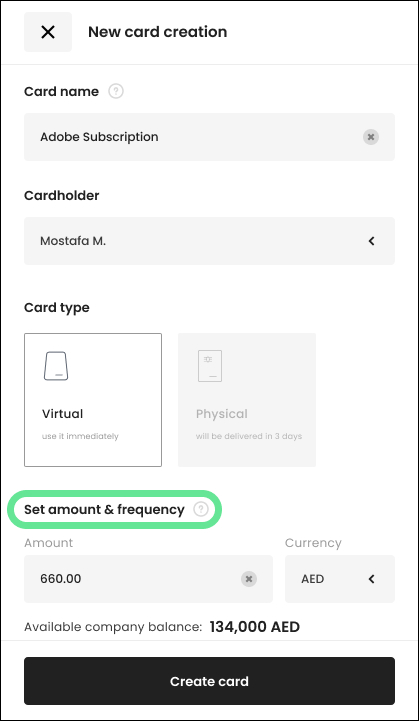
How To Improve Your Spend Management Process
Optimizing your spend management process might seem tricky at first glance. Fortunately, small and large businesses often rely on the same core strategies to optimize spending.
1. Rely On Spend Management Software: Pluto can help automatically track expenses, keep abreast of budgeting, and help manage strategic sourcing. CEOs and CFOs then have relevant, real-time data at their fingertips to see where their company is financially.
2. Focus On A Few Payment Methods: Do you have too many company cards in your pocket? It might be time to streamline purchasing methods to help simplify your spend management strategy. For example, your business can dramatically improve expense tracking by asking employees to only use company cards for business expenses instead of asking for their personal cards to be reimbursed.
3. Have An Organized Approval Process: You can clarify your spending process (you might want to check our post on how to create a corporate card policy) by ensuring employees have a clear hierarchy of how and by whom purchases need to be approved. If your team is unclear, they might complicate the payment process by not filing the right reports, which means your financial team could be left in the dark about purchases.
6 Efficient Spend Management Strategy Tips
Your company needs to optimize its spend management strategy to ensure the final results lead to reduced procurement costs, improved efficiency, and streamlined workflows.
Spend management best practices also help improve vendor relationships and communication, procure the optimal goods and services your business needs, and even help you earn volume and early payment discounts due to more effective and simplified financial practices.
Keep the following steps in mind for the best results regardless of your organization’s industry or size.
1. Calculate Expenses
Do you know exactly where employees spend company funds? If not, you’ll need to build a comprehensive list of company expenses, suppliers, and entities where funds are going.
This might quickly become a challenge if you’re in charge of a large business. If so, look to designate specific team members to review employee salaries, utilities, marketing, training, and all other day-to-day expenses to have the most detailed list.
You can’t improve what you do not measure. You can use Pluto to get a firm grip on your expenses. Pluto allows you to monitor and control your expenses so you clearly see how much was spent in which category.
2. Confirm Data
You’ll want to ensure all accrued expense data is accurate and can be cross-checked with receipts and inventory records. Ensuring transaction data is precise, and expense lists are free of duplicates, spelling mistakes, and other mistakes makes the entire spend management process more efficient.
Take this step extremely seriously if your company spend practices have relied on more manual processing methods. Standardization ensures that multiple currencies, formatting differences, and other nuances are accounted for when looking at spend analysis data.
(Goes without saying that when using Pluto this is all pre-done for you!)
3. Categorize Information
While optimal spend management brings all expenditures under a single umbrella to review, your team will still want to categorize expenses into various groups to make reviewing and making adjustments across different departments simpler.
It’s usually best to categorize expenses in multiple ways to understand where money is going. Pluto allows you to categorize expenses both through specialized cards or just by tagging, so everything is nicely grouped together when it is review time.

4. Review Expenses
A well-thought-out process of calculating, verifying, and categorizing spending information will simplify your entire review process when you’re looking at spend data.
You should immediately be able to spot expenses that are anomalies or recurring spending that might be able to be cut out from the start.
Pluto’s dashboard can give you a high level but also a detailed view, so you can clearly identify trends and separate expenses.
5. Devise A Strategy
You’ll want to move decisively once you’ve identified potential changes to spending habits and department budgeting approaches.
It might seem difficult at first glance to start reducing budgets, cutting out vendors, or make other dramatic changes to your company’s budget and expense habits. Rely on good change management practices and your leadership team to cultivate employee and stakeholder buy-in to any adjustments.
6. Practice Good Data Forecasting
Keep updating your expense data as you make a budget and spending adjustments. Doing so keeps your team on top of where funds are going and can help forecast different spending scenarios and how they might impact your business’s bottom line.
Keeping data and information updated becomes particularly important if your expenses grow to ensure financial operations run smoothly. Don’t forget to cultivate supplier relationships if you work with different vendors for optimal inventory management.
Should You Rely On Spend Management Software?
Manually processing expense claims, keeping up with petty cash, and tracking company credit cards can quickly turn inefficient, hinder your company’s financial management, and inhibit the overall procurement process.
In contrast, the right spend analysis solution can aid real-time expense tracking, provide easy-to-read charts and graphs of high-level expenses, and capture and store financial-related documents, so your finance team members are not scrambling to find a receipt or report.
Pluto has a multitude of features including procurement software and account payable that will help you with spend management and make spend control much easier.
1. Flexibility
Pluto allows you to create cards for various purposes, edit spending limits on the go and monitor your expenses in real time. This allows you to scale up or down depending on what your business needs at any given moment.
2. Powerful Analytics
With Pluto, you will be able to track spending patterns and areas of high expenditure and get real-time insights into your business finances. The powerful analytics will help you make better decisions about where to allocate your resources.
3. Ease Of Use
The main bottleneck of many spend management platforms is that the employees do not use them - as it is just too time-consuming. Not with Pluto! The sleek and user-friendly interface makes expense management a breeze.
4. Simplified Reimbursements
Receipt upload and reimbursements can be quite a burden for the team. Pluto allows you to take pictures of receipts with your phone and just add them to your reimbursements list. With the use of categories and tags, you will be able to both submit and review them in record time!
Key Takeaways For Company Spending
Spend management remains an essential component of all organizations regardless of size. Accountability for every dirham flowing in and out ensures your company maximizes revenue and remains growth-focused, no matter the budget.
You can take the first step today by relying on Pluto and processes to establish control over budgets, track spending, manage payments, cut costs, and boost your financial team’s day-to-day operations and processes.
Modern finance teams save time & money with Pluto.
Get started today
Join 2000+ finance professionals keeping up to date with the latest news & releases.
© Pluto Card is a Pluto Financial Services Inc. company 2024
The product and services mentioned on this webpage belong to Pluto Technologies Ltd (Pluto), a company incorporated under the laws of Dubai International Financial Centre (DIFC), Dubai holding commercial license number CL5294. Pluto is a financial technology provider and not a bank. Pluto provides certain facilities for the utilization of payment services through Nymcard Payment Services LLC under the applicable payment network and Bank Identification Number Sponsorship of Mashreq Bank PSC. This is pursuant to the license by Visa® Inc and is available for the residents of UAE subject to Terms and Conditions of use




